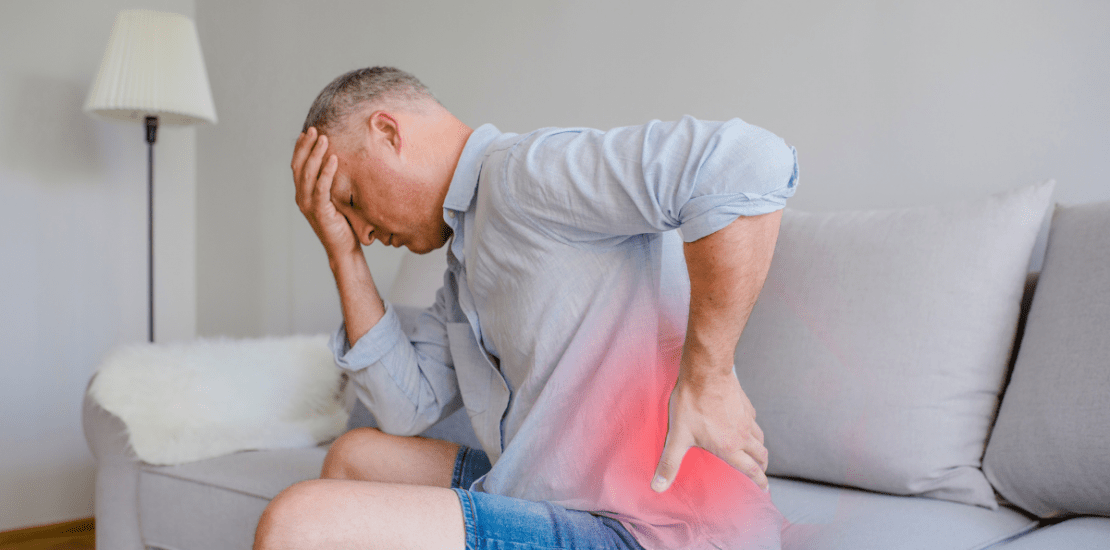- September 22, 2020
- Posted by: Daniel Ryan
- Categories: Exercise, Low Back Pain, Move Physiotherapy

What Is a Bio-Psycho-Social Model?
It is now common knowledge that our level of pain is directly correlated to the amount of ‘threat’ that our brain is perceiving.
There are many sources that influence this ‘threat’, both positively and negatively. For example:
- Biological Threat – For example tissue damage from a torn muscle or a sprained ligament, inflammatory markers in our blood stream from an injury, alcohol consumption which can increase our inflammatory markers in the blood stream, other floating viruses and illnesses AND MORE. Any negative biological input which our body can perceive as a threat becomes the ‘bio’ part of our pain picture. But it is important to look beyond simply JUST our injured body part.
- Psychological Factors – What are our beliefs regarding our injury? Are our thoughts and beliefs amplifying our level of threat, or are they decreasing it?
Do we believe that we are totally and permanently disabled because of our injury? Or, do we believe that we will recover from our injury?
- Social Factors – Do we have social supports in place that increase or decrease our brains perceived level of threat?
Do we have a supportive network of friends and family who can nurture us and help us in our recovery? Do we have access to services who can assist in our recovery – for example, physiotherapists, occupational therapists, psychologists etc. Or conversely, can we not afford these services? Do we not have available resources (time, money, family) to dedicate to our recovery?
These factors can ALL dramatically increase or decrease our perceived level of ‘threat’ regarding our injury, and therefore our pain state.
The next series of articles aims to break down the ‘Bio-Psycho-Social’ model of pain for a number of different injuries – ranging from your common muscle strain to complex lower back pain.
Today our example will be the Complex Lower Back Pain. In order to illustrate how ‘psycho-social’ factors can influence pain; we are going to make the ‘biological’ side of the presentation identical in both scenarios.
Lower Back Pain: Joe vs Vicky
Biological Factors
Both Joe and Vicky have lower back pain. As is most common in lower back pain, they had the following ‘biological’ contributions to their pain:
- Postural contributions: Rigid lordotic posture with poor movement awareness of how to vary movement.
- Muscle tightness: Affecting the Quadratus Lumborum, Gluteal, Hip Flexors and Quads
- Muscle weakness: Affecting the core musculature, glutes, midback and hamstrings.
- Radiological Examination: Mild degenerative changes affecting the lumbar spine. Both have expected signs of degeneration through their L4/5 facet joints (age expected changes that are normal beyond your 30+ years).
All of these factors can create a biological ‘threat’ to our system. However, fundamentally these factors alone do not necessarily contribute to pain. There are many studies that demonstrate:
- Research states there is no one posture that is correlated to pain. Your best posture is one that can be varied!
- Degenerative signs in the lumbar spine are hugely common! Infact, these changes occur in your 30s. Emphatically, studies will show that the mere presence of these signs is not a determinant factor for pain.
As such, there are other factors that play into our pain experience.
In comparing Joe and Vicky, both experience pain in their lumbar spines. However, Joe experiences an almost constant 8/10 pain in his back, whereas Vicky only suffers a 4/10 pain. Let’s look at the psychosocial factors that may be playing a role:
Psychological Factors
Joe has amplified the perceived threat levels in his brain relating to his back pain because of the following beliefs:
- His best friend had ‘degenerative changes’ in his lumbar spine. He has had pain for years as well – there was nothing he could do to fix it. As such, Joe thinks he is in the same boat. He is going to live with this pain forever.
- Joe has been to physiotherapy, to chiropractic and to osteopathy. Every person tells him something different! Nobody really knows what on earth is happening with his back pain!
- Joe is hunting for a diagnosis. There HAS to be something that can explain this pain. Without this diagnosis, how can anybody even think that they have the right answer to fix it?
- Joe believes that bending forward will ‘put his back out’. It has before as well. This movement needs to be avoided at all costs.
Conversely, Vicky has decreased her ‘perceived level of threat’ with the following beliefs:
- Vicky understands that most episodes of back pain resolve within 2-4 weeks. She is in HEAPS of pain at the moment but she knows that it will get better.
- She understands that these degenerative changes are normal and natural. It is common for people to see these findings with an X-ray, both with and without pain.
- She understands that the many ‘biological’ contributions to her pain can be managed and fixed. She can stretch tight body parts, strengthen weak body parts and most of all – encourage MOVEMENT.
Social Factors
Joe has amplified his perceived level of threat because of the following social factors:
- He is already financially stressed! He can’t afford to simply stop and ‘look after his back’. He needs to keep pushing and working.
- In addition to not being able to afford treatment – he doesn’t even have the time for it.
- Joe has a family that is reliant on him! He is the primary bread winner. Joe believes it is his responsibility to provide for his family. If he can’t, who will?
These social factors, and more, increase the stress and threat level for Joe and as such play a big role in amplifying his pain experience.
Vicky has decreased her perceived level of threat with the following social factors:
- She has a supportive family who is able to support and nurture her as she recovers from her back pain.
- She has the time and available resources to seek treatment. As such, she can seek guidance from a professional for the management of her pain – who is able to talk her through her injury and its expected recovery process.
Conclusion
Fundamentally, we understand that each person that presents to physiotherapy is unique – and the pain experience of one person can be COMPLETELY different from another
But ‘the issues in the tissues’ is only one piece of the puzzle. This is easily identifiable in complex cases, such as the one above – but it plays a role in even the most minor of soft tissue injuries. We will explore this later in the series!
If you are experiencing pain –
- DECREASE YOUR THREAT LEVEL!
- Take control of your actions that can enhance your ‘biological factors’ – for example, fix your diet, stop your alcohol consumption, gradually introduce movement within acceptable pain limits.
- Decrease your psychological threat: reinforce to yourself – YOU WILL GET BETTER.
- Surround yourself with positive social influences – with a group who can assist and nurture your recovery. Similarly, avoid people who are ‘doom and gloom’, who are convincing you that things will never get better… the things we know from our research COMPLETELY IS NOT TRUE.
If you are experiencing chronic pain – YOU CAN RECOVER. However, as opposed to simply aiming to be instantly pain free, you might have to set smaller goals along the way – such as improving your mobility, or your walking tolerance, or simply gaining more movement awareness.
Your physiotherapist can help!
